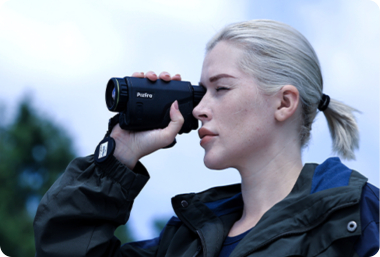Can Thermal Scopes See Infrared?
To address the question of whether thermal scopes can see infrared, we must first understand the relationship between thermal imaging and the infrared spectrum. The electromagnetic spectrum encompasses radiation of varying wavelengths, from gamma rays (shortest) to radio waves (longest). Infrared radiation sits between visible light and microwave radiation on this spectrum, covering wavelengths from approximately 700 nanometers to 1 millimeter. It’s crucial to recognize that infrared (IR) is a broad category that includes multiple sub-bands. Near-infrared (NIR) ranges from 0.7-1.4 μm, short-wavelength infrared (SWIR) from 1.4-3 μm, mid-wavelength infrared (MWIR) from 3-8 μm, and long-wavelength infrared (LWIR) from 8-15 μm. What we commonly call „thermal imaging“ primarily operates in the MWIR and LWIR bands, detecting the heat signatures naturally emitted by objects,and this feature is a major advantage for hunters. According to the International Commission on Illumination: „All objects with temperatures above absolute zero emit infrared radiation. The wavelength distribution and intensity of this radiation are directly related to the object’s temperature.“ This scientific principle forms the foundation of thermal imaging technology. Modern thermal scopes like the Pixfra Pegasus Pro Series and Chiron LRF Series are specifically designed to detect and visualize MWIR or LWIR radiation, which corresponds to the heat signatures emitted by animals, humans, and objects in the environment. Therefore, thermal scopes do indeed „see“ infrared radiation—specifically, the mid to long-wavelength infrared emissions that correspond to heat signatures. The Technical Distinction: Active vs. Passive Infrared Technologies An important technical distinction exists between the different technologies used to detect infrared radiation. This distinction helps clarify what exactly thermal scopes can and cannot detect in terms of infrared light. Passive Infrared Detection (Thermal Imaging): Devices like the Pixfra Sirius Series Thermal Monocular use uncooled microbolometer sensors to detect naturally emitted infrared radiation (heat) without requiring any external light source.




